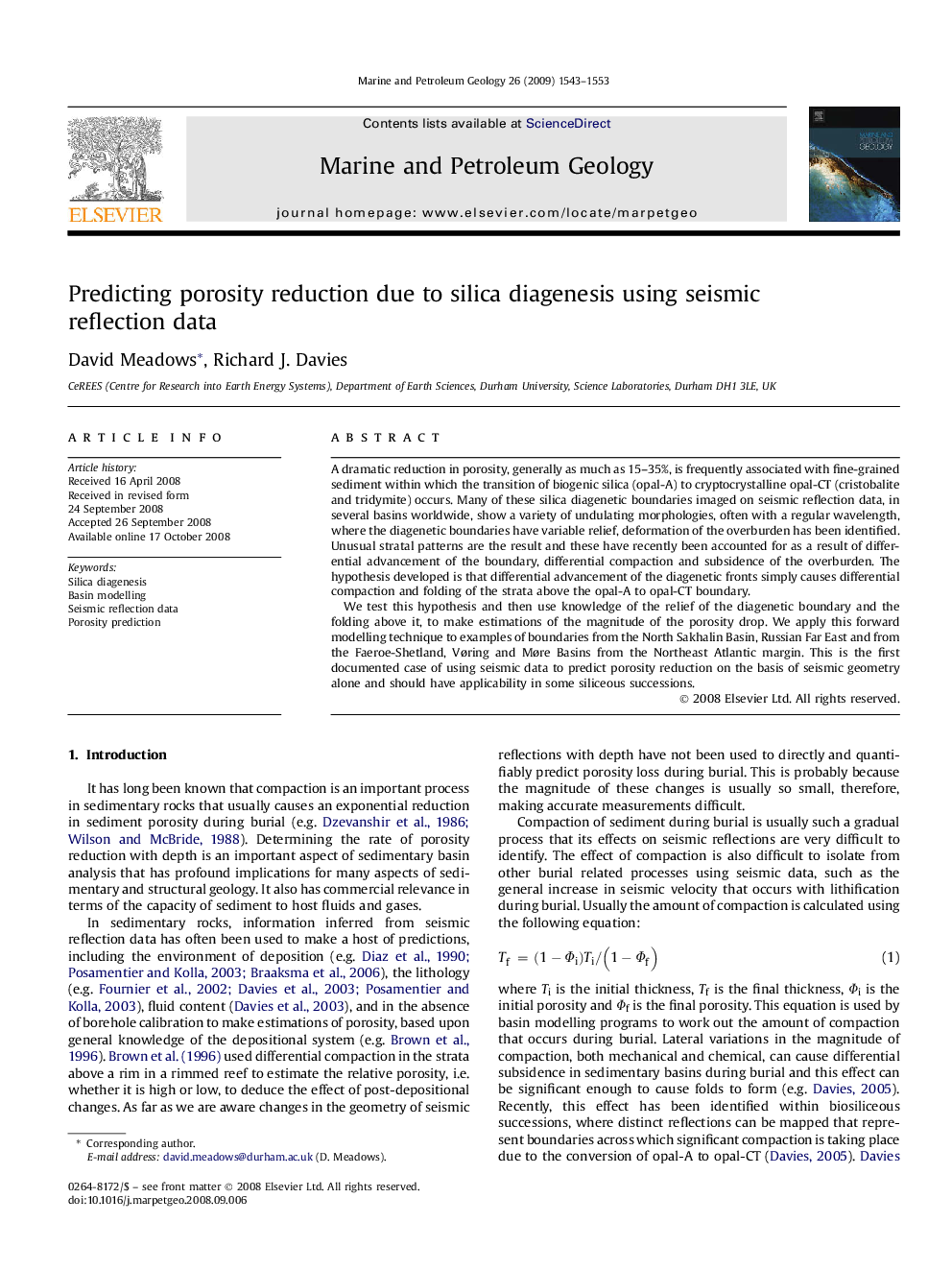| Article ID | Journal | Published Year | Pages | File Type |
|---|---|---|---|---|
| 4696568 | Marine and Petroleum Geology | 2009 | 11 Pages |
A dramatic reduction in porosity, generally as much as 15–35%, is frequently associated with fine-grained sediment within which the transition of biogenic silica (opal-A) to cryptocrystalline opal-CT (cristobalite and tridymite) occurs. Many of these silica diagenetic boundaries imaged on seismic reflection data, in several basins worldwide, show a variety of undulating morphologies, often with a regular wavelength, where the diagenetic boundaries have variable relief, deformation of the overburden has been identified. Unusual stratal patterns are the result and these have recently been accounted for as a result of differential advancement of the boundary, differential compaction and subsidence of the overburden. The hypothesis developed is that differential advancement of the diagenetic fronts simply causes differential compaction and folding of the strata above the opal-A to opal-CT boundary.We test this hypothesis and then use knowledge of the relief of the diagenetic boundary and the folding above it, to make estimations of the magnitude of the porosity drop. We apply this forward modelling technique to examples of boundaries from the North Sakhalin Basin, Russian Far East and from the Faeroe-Shetland, Vøring and Møre Basins from the Northeast Atlantic margin. This is the first documented case of using seismic data to predict porosity reduction on the basis of seismic geometry alone and should have applicability in some siliceous successions.
